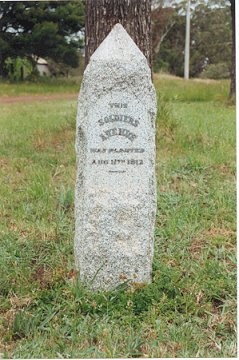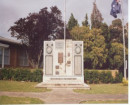Digby Avenue of Honour
Casterton-Portland Rd,Digby, GLENELG SHIRE
-
Add to tour
You must log in to do that.
-
Share
-
Shortlist place
You must log in to do that.
- Download report



Statement of Significance
This record has minimal details. Please look to the right-hand-side bar for any further details about this record.
-
-
Digby Avenue of Honour - Physical Description 1
Avenue of 97 trees Elms Ulmus spp. Obelisk at entrance.
Digby Avenue of Honour - Historical Australian Themes
Remembering the fallen
Digby Avenue of Honour - Physical Conditions
Good condition and sign posted.
Digby Avenue of Honour - Usage/Former Usage
Commemoration
Veterans Description for Public
Digby Avenue of Honour - Veterans Description for Public
The Digby Avenue of Honour is located along the Casterton-Portland Road. Many towns such as Digby began plans for their memorials in 1917, well before the First World War ended. The formal ceremony of planting for the Digby Avenue took place on Saturday August 11th 1917 in the presence of a large and representative gathering of people. There were representatives from the local council and churches and members of parliament. After the tree planting was completed afternoon tea was served at the nearby school. There was a suitable address to the gathering and patriotic songs were sung. The proceedings were completed by the National Anthem.
The Avenue was restored in 1991 and still comprises of ninety-seven Elms (Ulmus spp.), with individual bronze plaques for every district soldier who fought, placed at the foot of each tree.
In Australia, commemorative trees have been planted in public spaces since the late nineteenth century. Arbor Days were held regularly in most Victorian State Schools during the late 1800s and early 1900s, and numerous trees were planted in parks in Melbourne and throughout Victoria to mark the visits of important and famous people.
This tradition of commemorative planting was continued in 1901 when at the end of the Boer War trees were often planted for each soldier of the district who was killed in South Africa. These plantings, however, rarely consisted of more than two or three trees in each town.
During and after the First World War avenues of honour consisting of trees lining significant streets became a popular form of commemoration. They represented a new egalitarian approach to the commemoration of soldiers where rank was not a consideration: each tree symbolises a person.
Avenues of honour are a uniquely Australian phenomenon. Australians, and in particular Victorians, embraced the idea of planting them more enthusiastically than any other country in the world. The Eurack Avenue of Honour is the earliest known avenue of honour to be planted in Victoria and dates from May 1916.
By the time of the Second World War avenues of honour had declined in popularity as a means of commemoration. Today it is estimated that over 300 avenues of honour have been planted in Victoria to commemorate service personnel since 1901.
-
-
-
-
-
Digby Avenue of Honour
 Vic. War Heritage Inventory
Vic. War Heritage Inventory
-
1 Brockenshire Street
 Yarra City
Yarra City -
1 Bundara Street
 Yarra City
Yarra City -
1 Forster Street
 Hobsons Bay City
Hobsons Bay City
-
-










